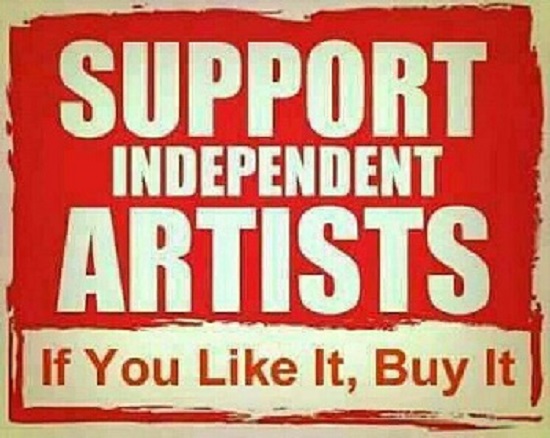
The Guardian published an article a couple of weeks ago by Tim Burgess of The Charlatans about the state of the music business in the light of Brexit, streaming and downloads. It’s an interesting read as far as it goes and it set the cogs whirring about why we got here, where we go next and will it be better or worse, or just different.
In my lifetime, the music business has been turned upside down. In the seventies, bands went out on tour to build up a following and to promote singles and albums, which is where the real money was. If you’ve survived this long and remember all this, bear with me, it’s worth getting some historical context. No internet, no mobile phones, only three TV channels and (until October 1973) no commercial radio. So you were left with the pirates like Caroline and the erratic reception of overseas stations like Luxembourg to let you know about new music. And the music press…
Every week I bought the NME, Melody Maker and Sounds and my paper round meant I could sneak a look at Blues & Soul and Disc/Disc and Music Echo as well. By 1973, with a bar job and a Saturday job with an entertainment agent booking acts for local pubs and clubs, I had a few bob to spend on some of the music I was reading about. Add the cost of my print habit to the cost of buying an album (about five percent of the average weekly wage in the mid-seventies) and being into music was a real financial commitment (even if you took the risk of doing a few temporary swaps with your mates to dip into their choices).
Buying music in the seventies wasn’t just an investment in listening to a piece of music. You exchanged your hard-earned (cash of course) for something physical that you carried home in a bag before lowering it on to the turntable, gently caressing the vinyl with the stylus and waiting for a glorious noise to erupt from the speakers. But let’s just rewind that a few minutes. If you bought an album and you were taking public transport home, you had the chance to look at the album artwork as well. A good album sleeve was so much more than a bit of on-shelf advertising; a twelve-inch square format created opportunities for quality photography and graphic design to enhance the musical content of the package. When it worked, it was an extra visual dimension to a piece of aural art:
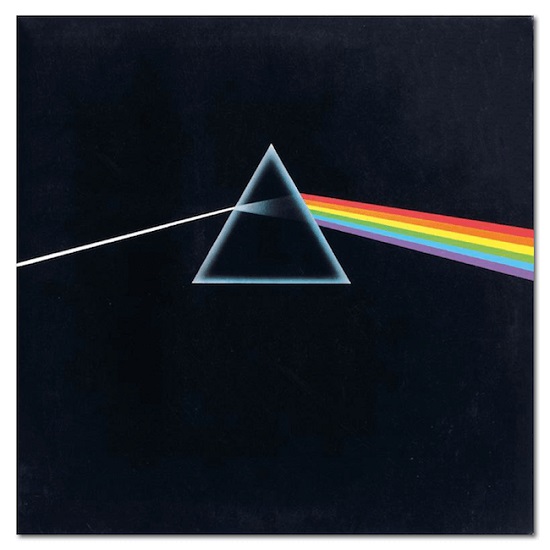
When it didn’t, it looked a lot like this (which proves that you can’t get it right all the time):
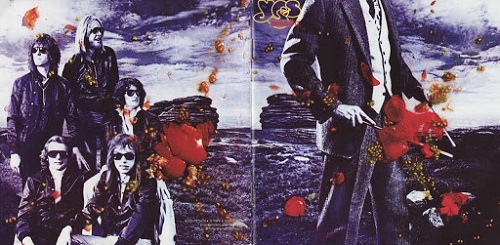
The gatefold sleeve doubled up the visual real estate (exploited perfectly on Thin Lizzy’s “Live and Dangerous” double album with a shedload of Chalkie Davies pics all over the outer and inner sleeves of the album):
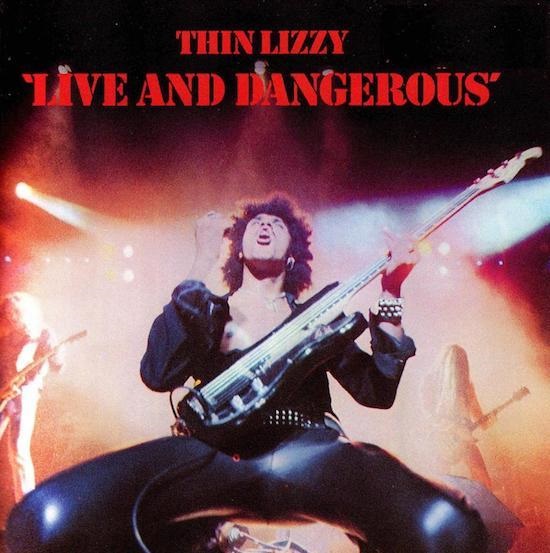
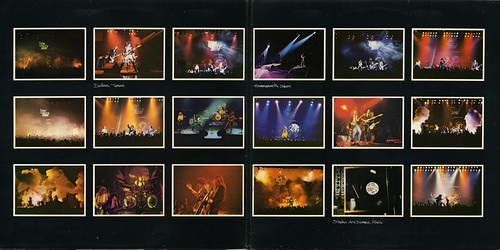
Designers started to exploit die-cut sleeves and all sorts of interesting innovations; PiL’s “Metal Box” looked really clever, but only if you hadn’t seen The Small Faces’ “Nut Gone Flake” packaging twelve years earlier.
The visuals were only part of the album experience; you could get a lot of text on a sleeve, particularly if you had a printed inner sleeve or three as well. There was all the obvious geek stuff; musicians involved, instruments played (or not played if you were Queen) and lyric sheets, but some bands made a real effort; UB40’s cover for the first album “Signing Off” in 1980 was a copy of the unemployment benefit attendance card, they’d been filling in before they broke through. Ten years later, Squeeze released a live album with a boxing concept, “A Round and A Bout” with a little bonus – they listed every gig they’d done between 1974 and 1990 on an insert with the album. Thanks guys, you’ve no idea how useful that’s been to me over the years. Seriously.
I’m sure you get the message by now. During the first vinyl era, the experience was about much more than just listening to the music. You could carry an album around at school as a sign of your taste and discernment and to impress the other gender (I pitied the guys who carried Groundhogs and Genesis albums, but that’s Darwinism for you). It was a bit like creating a mixtape a few years later and a playlist many years later. Or drinking bottled designer lager in the eighties. If you were a fan of music in the seventies or eighties you were committed and attached to it; it had a financial and emotional value. And it had a longer lifespan; since the mid-nineties, the norm is for singles and albums to achieve their highest chart position in the first week of release, but fifty years ago the climb to the top of the charts could take weeks (and probably a few bulk purchases in chart return shops to help it along).
This isn’t a dewy-eyed, rose-tinted trip down memory lane. The seventies and eighties weren’t perfect; the music business was still a business, but it was one where labels invested in bands with a view to development over several years. A moderately successful band writing their own material could make a living for a few years with royalties on sales, radio, juke box and club plays and independent labels were few and far between. Things are a bit more polarised these days; the business only supports guaranteed winners and everyone else has to do their own thing. Time for a bit of a polemic: the technology that enabled the digital revolution degraded our experience of music. Listening to compressed audio on inadequate playback systems is the norm for most people now, despite the vinyl comeback, and the majority of listeners don’t pay any attention to artwork, credits or sleeve notes. We’ve walked blindfold into accepting a gradual erosion of the musical experience in the name of progress and fashion. We also have at least one generation that doesn’t believe in physical musical formats and certainly doesn’t believe in paying for them.
Fortunately the same digital technology that devalued music by making no-degradation copying possible, then compression, along with affordable storage and massive improvements in internet bandwidth, have enabled affordable home recording. Technological improvements cut both ways and musicians are a resourceful bunch; if you can’t get a deal with a major label, what have you lost? You don’t need access to a studio; you can set up at home. You don’t need access to a major label’s mastering and pressing facilities; you can find any number of those online. You don’t need a distribution network; you can load your music up to download and streaming services and make peanuts, or you can sell CDs and albums on your website by mail order and alongside other merchandise at your gigs.
In normal times, this isn’t a bad business model; you might be able to stay afloat if you have another job, have good merchandise to sell on tour, or both. And along comes lockdown; no gigs and no pop-up shop opportunities. I wish I could honestly say that I recommended live streams, but it’s not for me; I really miss the eye contact and (selfishly) I miss the opportunity to take pictures at gigs. If it works for you, that’s great; enjoy it and make a contribution; I’ll be waiting for the moment when live music re-emerges after this terrible disease is brought under control.
Me, I’ll continue to avoid the mainstream by buying (in order of preference) vinyl or CDs directly from artists’ websites, from independent record shops and at gigs. Two people I know have opened vinyl shops in the last few years and both are succeeding despite the current trading situation; long may they continue.
And that resourcefulness and creativity that musicians always demonstrate wasn’t going to be stifled by any number of lockdowns; no way. All of those skills developed and equipment bought to set up home studios have been subtly repurposed to enable musicians to collaborate by sharing audio and video files online. I don’t know any musicians who see this as an ideal situation, but, like solitaire, it’s the only game in town. After nearly a year and millions of audio files bouncing around the internet, albums that were in progress have been completed remotely and albums have been conceived, gestated and born. It doesn’t matter how difficult you make life for musicians (or artists generally), they will always find an outlet.
Whenever we reach the new normal, whatever that may be, spend your money in a way that benefits the people making the music you love. Buy physical copies of music either directly from bands or from independent record stores – there are loads of them. Most importantly, get yourself out to as many gigs as possible. I’ll see you at the front.
Allan was a bit chuffed to get his first big festival photo accreditation this summer for Cornbury Festival in Oxfordshire. It was perfectly timed to coincide with a complete weekend shutdown of rail services through Oxford during the hottest weekend but it takes a lot more than that to stop a determined photographer. When he eventually made it there, well, we’ll let him tell you about it.
OK, Friday night and the first band to play in the dark with stage lights was Stereo MCs. Had to be done really. It was a bit of a nostalgia thing; loads of memories of my DJ days in the late eighties/early nineties. From the outset, it was obvious that Rob Birch is still a hugely charismatic and dynamic frontman. I think this just about captures it:
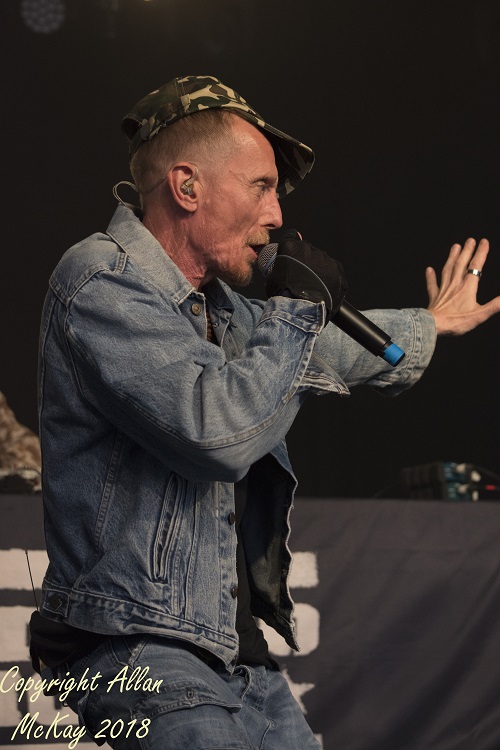
Last set on Friday night was UB40. I saw UB40 on their first national tour when they supported The Pretenders on tour across the UK in 1980. They were fired up, they wanted to succeed and they sounded amazing. Nearly forty years on, it’s a very different story; there are two UB40s touring and neither’s convincing. This version is pretty pedestrian, but they have one secret weapon – Brian Travers. I’m sure he wouldn’t claim to be the best sax player in the world, but he knows how to sell it:
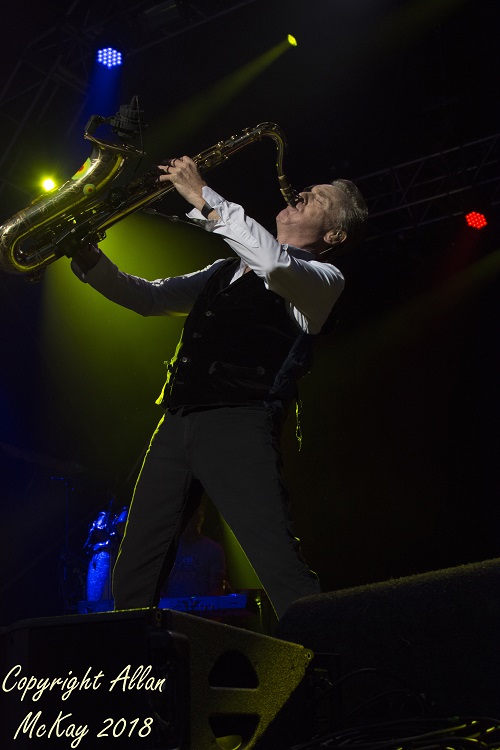
Saturday night was busy (although Alanis Morissette decided not to allow any press access for her set) and the Songbird Stage was the place to be. Obviously Mavis Staples was a do-not-miss, but PP Arnold was another. You would think she’d never been away; she sounded fabulous and looked like this:
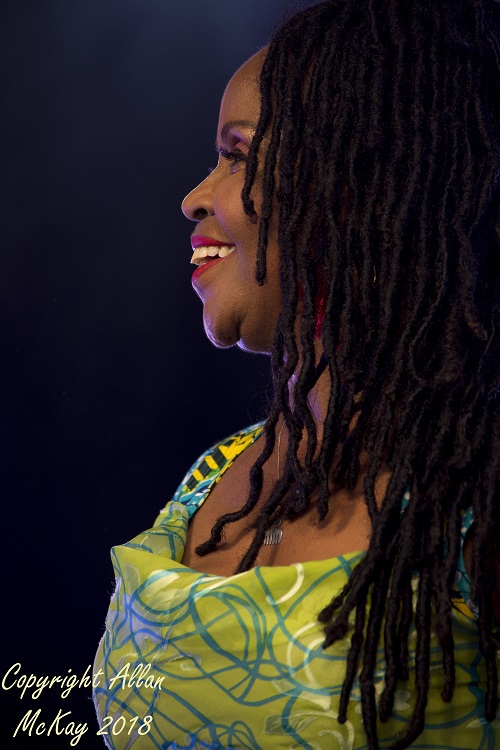
Sunday afternoon on the Pleasant Valley Stage; anyone for a bit of Deacon Blue? Definitely; I saw them a couple of times in the very early days and I loved them. It’s partly a Scottish thing, but it’s mainly a music thing. They have great songs and they have the experience to sell them on a festival stage. You never know, Ricky might do a bit of politics. Actually you do know, he will. Anyway, he’s looking pretty pumped these days:
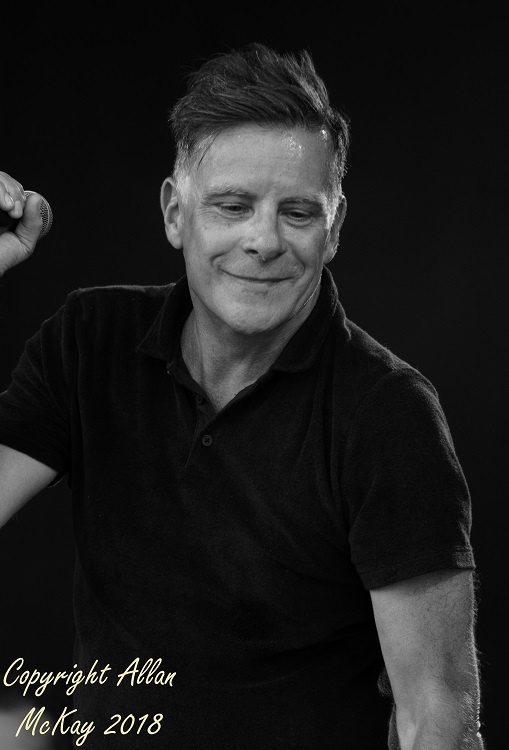
Sunday evening headliners – Squeeze. We go back a long way; I saw Squeeze for the first time at Dundee University Students’ Association; there were more people on stage than in the audience and it was still a great gig. I’ve photographed them on occasions forty years apart (I know, I don’t look that old) and I still love those Difford/Tilbrook songs. This time, it was Yolanda Charles that really caught my eye:
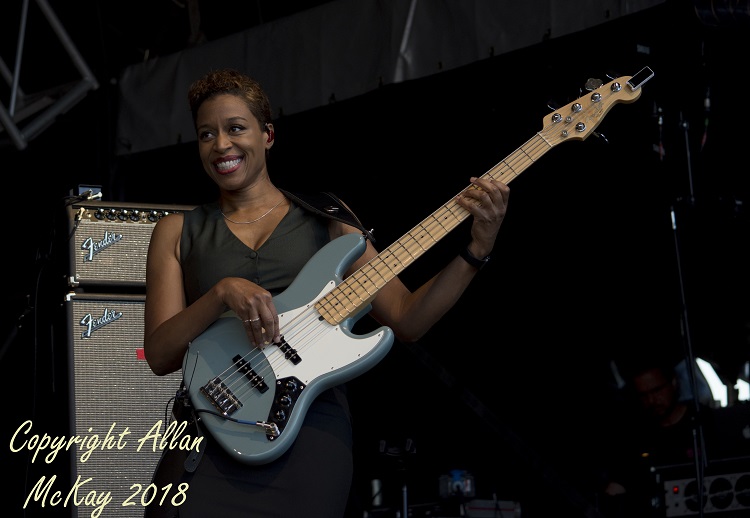
 Depending on who you listen to, it’s the posh festival or the older person’s festival. I was in the unusual position of trying to balance taking a few pictures and writing a bit as well; I got to see the first three songs of each performer’s set from the pit before being shuffled on to the next stage. Thankfully, there was an exception to this routine; the Caffe Nero stage opened at 9:00am and featured unsigned artists throughout the day. It’s a great way to kick off the day; live music from about 9:30 and great coffee as well. Before most festival-goers are out of bed, you could hear the twenty-first century folk of Lucy Mair, Megan O’Neill’s take on contemporary country and Key West’s raucous and irresistible rock/Gaelic/Americana hybrid.
Depending on who you listen to, it’s the posh festival or the older person’s festival. I was in the unusual position of trying to balance taking a few pictures and writing a bit as well; I got to see the first three songs of each performer’s set from the pit before being shuffled on to the next stage. Thankfully, there was an exception to this routine; the Caffe Nero stage opened at 9:00am and featured unsigned artists throughout the day. It’s a great way to kick off the day; live music from about 9:30 and great coffee as well. Before most festival-goers are out of bed, you could hear the twenty-first century folk of Lucy Mair, Megan O’Neill’s take on contemporary country and Key West’s raucous and irresistible rock/Gaelic/Americana hybrid.
Anavae; that’s a name you need to remember. Playing a lunchtime slot on the Caffe Nero stage, their blend of tribal rhythms, Jamie Finch’s fat guitar and keyboard sounds and stunningly powerful vocals from Rebecca Need-Menear generated a buzz that went way beyond caffeine. And then it was time to watch Danny and the Champions of the World do their wide-screen Americana thing. The songs were strong, the playing was superb and Danny Wilson looked totally relaxed on the big stage in the mid-afternoon sunshine.
In the evening, Stereo MCs absolutely owned the Songbird stage; it was tight, it was energetic and Rob Birch was as wired and compelling as ever. UB40; well, Brian Travers worked really hard to sell it, but it’s not the real thing (and I’m sure the Ali Campbell version isn’t either). It made me wish I’d been able to see Jimmy Cliff earlier in the day.
The reason I missed that set was that Caffe Nero had managed to grab Albert Lee and Peter Asher for a set at 5:30. You can google both of those guys, but I can tell you they have an astonishing pedigree with over a century in the music business between them. Sixty minutes passed in the blink of an eye as these legends entertained a packed Caffe Nero stage with songs and anecdotes; it was the first standing ovation I saw over the weekend but certainly not the last.
You can see the pictures from the day here.
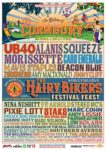 We try to do one festival a year here at Music Riot. Last year it was iconic Isle of Wight Festival; this year we’re staying a bit closer to home with a visit to Cornbury Festival in Oxfordshire. We took several factors into account before making the scientific decision to opt for Cornbury this year despite the stiff competition from the plethora of festivals across the UK, from the boutique to the behemoth. So, what do you think swayed us in the direction of Chipping Norton for this year’s summer outing?
We try to do one festival a year here at Music Riot. Last year it was iconic Isle of Wight Festival; this year we’re staying a bit closer to home with a visit to Cornbury Festival in Oxfordshire. We took several factors into account before making the scientific decision to opt for Cornbury this year despite the stiff competition from the plethora of festivals across the UK, from the boutique to the behemoth. So, what do you think swayed us in the direction of Chipping Norton for this year’s summer outing?
Well, let’s start with the headliners; UB40, Alanis Morissette and Squeeze. They’ve all enjoyed single chart success and critical acclaim and each of them has survived through several decades in the music business; four decades each in the case of Squeeze and UB40, and Squeeze are still knocking out great new tunes as if the last forty years never happened. Look a bit lower down the bill and you have all the reasons why anyone who loves music should be going to Cornbury.
There’s great music to appeal to all ages and tastes, from the reinvented P.P. Arnold and the evergreen Mavis Staples and Jimmy Cliff, through the nineties dance of Stereo MCs right up to the London Americana of the superb Danny and the Champions of the World. And, if that wasn’t enough, don’t forget that Cornbury has the poshest loos on the festival circuit; when you reach a certain age, that’s really important.
If all of that hasn’t convinced you, Caffe Nero have a stage at the event where you can get great coffee and see absolutely loads of upcoming talent. We’ve already heard many of the artists playing on the Caffe Nero stage over the last couple of years; you could spend the entire festival there and hear nothing but fabulous music. See you down the front.
Cornbury Festival takes place between Friday July 13 and Sunday July 15.


